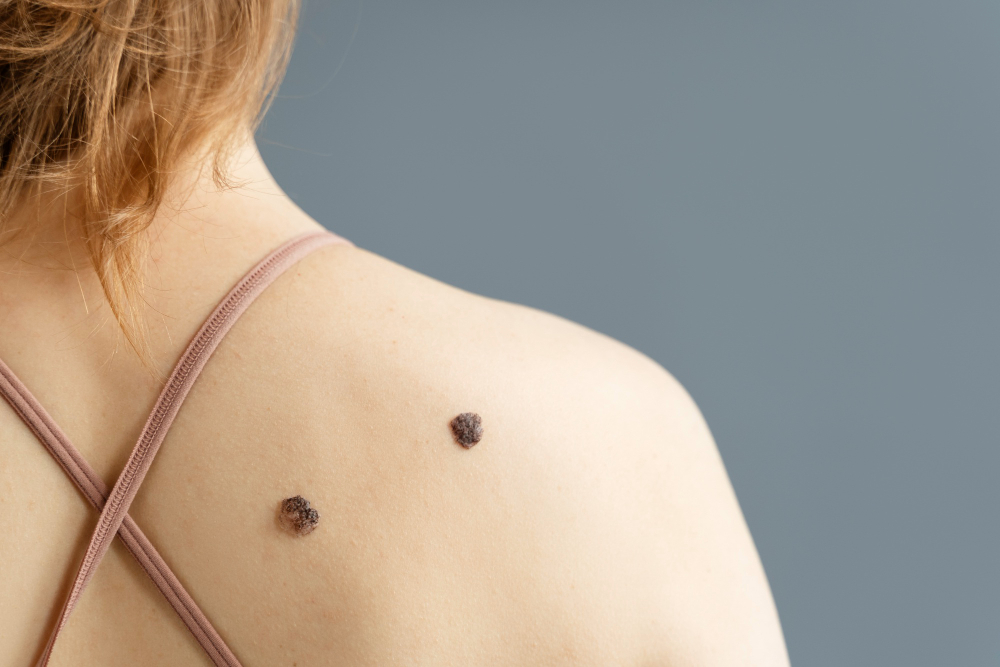With an alarming rise in skin cancer cases worldwide, understanding the difference between birthmark and melanoma has never been more crucial. While moles are common, melanoma, a type of skin cancer, poses a serious threat. The number of cases is increasing globally, and it’s especially important to talk about this in India, where awareness levels about skin health are still growing. Learning to spot the signs early can make a huge difference.
Identifying Moles and Melanoma
First off, what are moles? Moles are small, benign patches on the skin. These harmless skin spots are common and can vary in color, often appearing brown, black, or even flesh-toned. Most moles are harmless and don’t change over time.
On the flip side, melanoma is an aggressive skin cancer. Unlike moles, it can spread quickly if not treated. It usually looks like a new spot or a change in an existing mole. Several factors can trigger melanoma, such as excessive sun exposure. Family history and certain genes also play a role. Unlike regular moles, melanoma can be deadly, and it’s vital to catch it early.
Visual Differences and ABCDE Detection
Recognizing early signs of melanoma is essential. The ABCDE rule helps identify signs of melanoma cancer:
- Asymmetry: One half doesn’t match the other.
- Border: Irregular or blurry edges.
- Color: Uneven shades of black, brown, and tan.
- Diameter: Larger than a pencil eraser.
- Evolution: Changes in size, shape, or color.
A regular mole tends to have a consistent shape and color. Melanoma symptoms show as an odd-looking mole that can grow in size or looks different from the others. Remember, not every mole is a cause for concern, but if you spot one that stands out, it’s time to see a dermatologist.
Prevention and Early Detection
Avoiding too much sun is a major step in skin cancer prevention. Indians love the sun, but too much exposure can increase melanoma risks. Tanning beds are another thing to avoid as they can increase the risk of skin cancer.
- Always use sunscreen, even on cloudy days.
- Wear hats and clothing that protect your skin.
In India, regular skin check-ups might seem like a hassle, but they can save lives. Many clinics offer affordable services to check for any signs of melanoma skin cancer, which could catch any issues early.
Self-Examinations and Long-term Skin Health Management
Performing self-skin checks at home each month can be super helpful in maintaining skin health. Follow these steps:
- Use a full-length mirror to examine your body from head to toe.
- Check all areas, including your back, neck, scalp, and the soles of your feet.
- Use a hand mirror to see any hidden spots.
- Look for the ABCDE signs of melanoma symptoms.
- Pay close attention to early stage melanoma signs like new spots or changes.
Lifestyle choices matter. Eating healthy and avoiding smoking can lower risks. Genetic factors also play a role, so knowing your family history helps.
In India specifically, several resources offer help in managing skin health. For example:
- Dermatology clinics can provide comprehensive skin checks.
- Online consultations are becoming popular and accessible.
- Educational resources and support groups are available for those seeking guidance.
By taking simple steps and staying informed, you can effectively manage your skin health. Whether it’s understanding birthmark vs melanoma differences or detecting signs of melanoma cancer early, proactive care and management can make a significant difference.
